|
View as a webpage
|

Palm Springs-South Coast Field Office
|
|
ISSUE 963- August 13, 2021
|
|
|
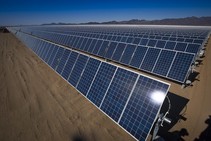
BLM welcomes public input on the Oberon Solar project
The BLM invites the public to review the environmental analysis and land use plan amendment for a proposed 500-megwatt photovoltaic solar project on 2,700 acres of public lands near Desert Center in eastern Riverside County. The efficient deployment of renewable energy from our nation’s public lands is crucial in achieving the Biden Administration’s goal of a carbon pollution-free power sector by 2035. (BLM CA News Release)
|

Interior Department Advances Three Solar Projects in California, Continuing Efforts to Develop a Robust Clean Energy Economy
In support of the Biden-Harris administration’s goal to address climate change and promote renewable energy production, the Department of the Interior announced today it is advancing three solar projects on 4,700 acres of public lands in Riverside County, Calif. (DOI News Release)
|
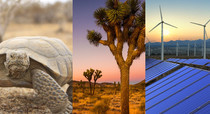
Desert Renewable Energy Conservation Plan
The Desert Renewable Energy Conservation Plan (DRECP) is focused on 10.8 million acres of public lands in the desert regions of seven California counties – Imperial, Inyo, Kern, Los Angeles, Riverside, San Bernardino, and San Diego. It is a landscape-level plan that streamlines renewable energy development while conserving unique and valuable desert ecosystems and providing outdoor recreation opportunities. (BLM Web)
|
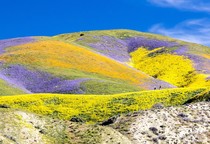
American Landscapes, Seen Through the Lens of Bob Wick
Last month, the U.S. Bureau of Land Management announced the retirement of Bob Wick, one of its most prolific photographers, after a 30-year career. Wick’s images of public lands across the American West have been seen and shared by millions; some of them became iconic symbols of the wildlife and areas being preserved. As a tribute to Wick’s efforts and keen eye, I wanted to collect some of my favorites from his body of work and share them here. (The Atlantic)
|
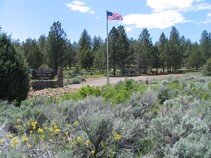
BLM has opening for campground host at North Eagle Lake, Lassen County
The Bureau of Land Management has an opportunity for a volunteer campground host at Eagle Lake, California’s second largest natural lake, north of Susanville in Lassen County. The host is needed for the remainder of the summer and fall camping season that runs through mid November. (BLM CA News Release)
|
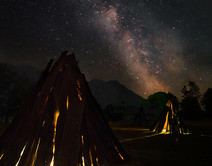
Walking in the footsteps of the Dumna, Kechayi and Western Mono peoples at the San Joaquin River Gorge
If you see granite outcrops with circular depressions you may be looking at a kitchen used for hundreds, if not thousands of years. That old oak tree is a living, breathing witness to the many changes experienced by the original peoples of these lands, including their unwavering resilience. (BLM CA Facebook)
|

BLM Bishop Field Office increases fire restrictions due to drought and wildland fire danger
Due to ongoing drought and increasing wildland fire danger especially at lower elevations, the Bureau of Land Management is prohibiting campfires, barbecues and open fires on all public lands, including developed campgrounds, in the Eastern Sierra Region managed by the Bishop Field Office. The seasonal fire order goes into effect Friday, Aug. 13, until further notice. (BLM CA News Release)
|
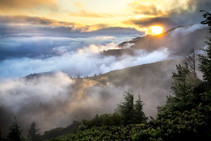
BLM increasing fire restrictions on North Coast due to wildfire danger
Due to increasing fire dangers and a continuing drawdown of firefighting resources, the BLM is increasing fire restrictions on public lands managed by the Arcata Field Office in Humboldt, Mendocino, Del Norte and Trinity counties. Campfires, barbecues and use of open flame, including camp stoves, will not be allowed until further notice. The restriction applies to all campgrounds, developed recreation sites, dispersed camping areas and recreation trails, including the Lost Coast Trail in the King Range National Conservation Area. (BLM CA News Release)
|
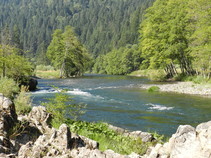
The Bureau of Land Management has temporarily closed the BLM-managed public lands west of Junction City because of the rapidly expanding Monument Fire. The closures affect lands west of Canyon Creek and Junction City, north of the Trinity River and California State Route 299, east of North Fork Trinity River, and south of Barney Gulch. (BLM CA News Release)
|

#TeamPublicLands, let’s talk about fires
With drought and dry conditions occurring in many U.S. states, "Know Before You Go" when planning a trip to your fav public lands spot. Check official websites for wildfire updates and burn restrictions for campfires. (DOI Facebook)
|
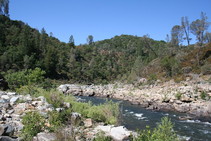
BLM California fire restrictions
BLM California fire restrictions or temporary public land closures reduce the risk of wildfires and protect the public. Often times, these preventative measures focus on human-related activities, such as campfires, off-road driving, equipment use and recreational target shooting, since human-related activities are the number one cause of a wildfires. Many BLM California offices have issued seasonal fire restrictions. (BLM CA Web)
|

Solar energy is the most abundant energy resource on Earth
173,000 terawatts of solar energy strikes the Earth continuously. That's more than 10,000 times the world's total energy use.
Which U.S. state generates the most utility-scale solar power?
A) Arizona, B) California, C) Florida, D) Texas
Keep scrolling to find out!
|
|
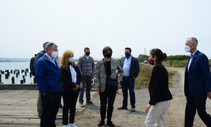
Secretary Haaland, CEQ Chair Mallory Highlight Offshore Wind Developments in California with Federal, Tribal, State and Local Officials
Secretary of the Interior Deb Haaland and White House Council on Environmental Quality Chair Brenda Mallory were in Eureka, Calif., today with U.S. Representative Jared Huffman, California Energy Commissioner Karen Douglas, Tribal leaders and community officials to discuss offshore wind opportunities that will create jobs and strengthen the local economy. (DOI News Release)
|
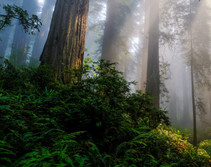
Secretary Haaland, CEQ Chair Mallory Highlight Conservation, Climate Resiliency Efforts in Visit to California’s Redwood Forests
As part of the Biden-Harris administration’s America the Beautiful initiative, Secretary of the Interior Deb Haaland and White House Council on Environmental Quality Chair Brenda Mallory traveled to Redwood National and State Parks today, where they met with community leaders who are forging collaborative, locally led partnerships to conserve and restore California’s Redwood forests and increase climate resiliency. (DOI News Release)
|
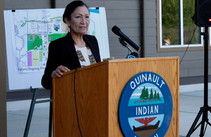
Secretary Haaland Discusses Tribal Climate Resilience, Broadband Internet Access in Visit to Washington
Secretary of the Interior Deb Haaland traveled to Taholah, Wash., today, where she discussed the Biden-Harris administration’s historic investments in Tribal communities, including funding for climate resilience projects and broadband internet access. (DOI News Release)
|
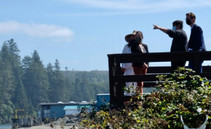
This Week at Interior Aug 13, 2021
Secretary Haaland travels to the Pacific Northwest to hear firsthand from Tribal leaders about issues confronting Indigenous communities; the Secretary visits California's Port of Humboldt Bay, as offshore wind opportunities are poised to revolutionize local economies; the Bureau of Land Management invites the public to weigh-in on a proposed 500-megawatt solar project in Riverside County, California. (DOI Video)
|
|
Question of the Week Answer
Answer: B) California
California is the nation's top producer of electricity from solar, geothermal, and biomass energy. In 2019, the state was also the nation's second-largest producer of electricity from conventional hydroelectric power and the fifth-largest from wind energy. California's greatest solar resource is in the state's southeastern deserts, where all of its solar thermal facilities and largest solar PV plants are located.

However, solar PV facilities are located throughout the state. In 2014, California became the first state in the nation to generate more than 5% of its utility-scale electricity from solar energy, and, by 2019, solar supplied 14% of the state's utility-scale electricity net generation. When small-scale solar generation is added, solar energy provided one-fifth of the state's total net generation. In 2019, California produced two-fifths of the total solar PV electricity generation and seven-tenths of the utility-scale solar thermal electricity generation in the nation. By November 2020, California had about 13,000 megawatts of utility-scale solar power capacity, more than any other state, and, when small-scale, customer-sited facilities are included, the state had almost 24,000 megawatts of solar capacity.
Source: U.S. Energy Information Administration
|
|
|
|
News.Bytes is a publication of the Bureau of Land Management in California.
Bureau of Land Management
California State Office
2800 Cottage Way, Suite W1623
Sacramento, CA 95825
(916) 978-4600
Send comments to the News.Bytes Team | Subscribe to News.Bytes | Unsubscribe
|
     
|
|
|